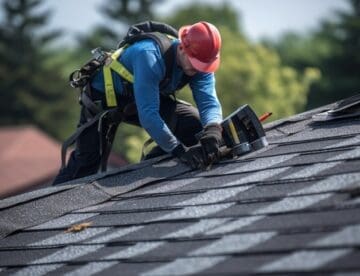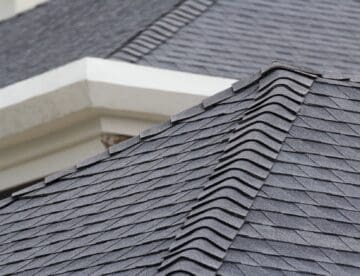In the world of construction and roofing, ensuring the longevity of commercial and industrial buildings is paramount. A key component in this pursuit is the maintenance of roofs, where access doors and hatches play a vital role.
This article provides construction and roofing professionals with a detailed guide on prolonging roof lifespan, focusing on the importance of access doors and galvannealed roof hatches.
Galvannealed Roof Access Hatch: Properties and Functions
In construction, durability is essential. Galvannealed roof access hatches are robust protectors against the elements. Let’s explore how these hatches strengthen roofs for various structures.
Definition and Explanation of Galvannealed Material
Galvannealed, a combination of galvanizing and annealing, produces a material with enhanced corrosion resistance. Roof access hatches made from galvannealed steel exhibit durability and longevity, making them ideal for standing up to the harsh conditions that roofs often endure.
Overview of Roof Access Hatches and Their Properties
These hatches serve as entry points for maintenance personnel and offer robust protection against environmental factors. Their weather-resistant design ensures the integrity of the roof structure, preventing leaks and other potential issues.
Functions of Roof Access Hatches
Like the BA-RAH A60 galvannealed roof access hatch, roof access hatches are important to any commercial or industrial structure as they:
- Facilitate safe and easy access for inspections, repairs, and maintenance activities; and
- Contribute to overall efficiency and safety by providing secure entry points to the roof.
The Crucial Contribution of Access Doors to Roof Longevity
Access doors play a crucial role in extending the lifespan of roofs. In this section, we’ll explore their pivotal contribution to maintaining the longevity of industrial, commercial, and residential structures.
Role of Access Doors in Roof Maintenance
Access doors are instrumental in maintaining roof longevity by offering controlled entry to specific areas. They:
- Prevent unauthorized access, safeguarding roofs from potential tampering and vandalizing; and
- Contribute to preventing water infiltration, a common cause of roof deterioration.
Benefits of Access Doors
Access doors play a crucial role in giving a roof an extended lifespan. Some of the benefits of installing access doors and roof hatches are:
- Enhanced Security: Restrict unauthorized entry, preventing vandalism or theft
- Efficient Maintenance: Provide easy access for routine inspections and maintenance tasks
- Weather Resistance: Seal vulnerable points, protecting against water, wind, and other environmental elements
- Compliance: Ensure adherence to safety regulations and building codes
- Versatility: Accommodate various roof types and structures, offering flexibility in design and functionality
Safety Access Door Installation Process
Ensuring secure access door installation requires careful attention. Let’s look at the essential considerations for construction and roofing professionals to reinforce structures and promote the longevity of access doors.
Proper Installation Procedures
During installation, ensure a watertight seal to prevent leaks. Secure the access hatch to deter unauthorized entry, emphasizing the importance of proper installation for safety and longevity.
Materials and Tools Needed for Installation
Select high-quality materials and use appropriate tools for safe and efficient installation. Adhering to these guidelines ensures the longevity and functionality of access doors.
Safety Standards and Regulations
Follow local building codes and safety guidelines to guarantee the secure installation of access doors. Compliance is essential to uphold industry standards and ensure the safety of the building.
Comprehensive Guide to Roof Maintenance
Maintaining the longevity of a roof involves a combination of proactive measures and regular checks. Here’s a deeper dive into each of the 10 practical tips for comprehensive roof maintenance:
- Perform Regular Inspections. Inspect the entire roof surface for any visible signs of damage, including missing or damaged shingles, granule loss, or signs of water staining on the ceiling inside.
- Remove Debris. Keep gutters clear of leaves, branches, and debris—including downspouts—to ensure proper water flow. Clogged gutters can lead to potential roof damage in the long run.
- Repair Minor Damages Promptly. Addressing small issues, such as punctures, cracks, or loose shingles, promptly prevents them from developing into more significant problems. Doing this preserves the overall integrity of the roof.
- Schedule Professional Inspections. Enlist the expertise of roofing professionals for comprehensive inspections. Their trained eye can catch issues that might go unnoticed during routine checks, providing an extra layer of assurance.
- Have Regular Maintenance Plans. Establishing a routine maintenance plan ensures that inspections, cleaning, and repairs occur at regular intervals. This proactive approach helps catch problems early, reducing the risk of extensive and unexpected damage.
- Weatherproof the Roof. Use weather-resistant coatings to shield the roof from external elements. This action provides an additional protective layer against UV rays, rainfall, and extreme temperatures, strengthening the roof’s durability.
- Trim Overhanging Branches. Overhanging branches can damage a roof during storms or high winds. Regularly trim branches to a safe distance from the roof, preventing potential harm and reducing the risk of debris accumulation.
- Ensure Proper Ventilation. Adequate attic ventilation helps prevent moisture buildup and excessive heat. Proper ventilation helps regulate temperature, reducing the strain on the roof structure and preventing premature aging.
- Check Flashings and Seals. Flashings and seals around roof penetrations, like vents and chimneys, are prone to wear. Regularly inspect and replace damaged or deteriorating flashings to maintain a watertight seal.
- Upgrade Insulation. Improve insulation in the attic to regulate indoor temperature and reduce energy consumption. Proper insulation minimizes heat transfer. Doing this alleviates stress on the roof and prolongs its lifespan.
By implementing these comprehensive maintenance tips, construction and roofing professionals can ensure the resilience of roofs in various structures, from industrial and commercial buildings to residential homes.
Regular attention to these details not only prevents problems but also promotes the long-term health and functionality of the entire roofing system.
Wrapping It Up
Keeping buildings durable also depends on thoughtful and intentional roof maintenance. Professionals can protect structures from the elements by focusing on access doors and galvannealed roof hatches, prolonging roof life and ensuring overall building durability. Following these maintenance tips enhances safety and boosts the efficiency and resilience of the structures we work on.



